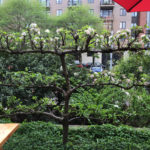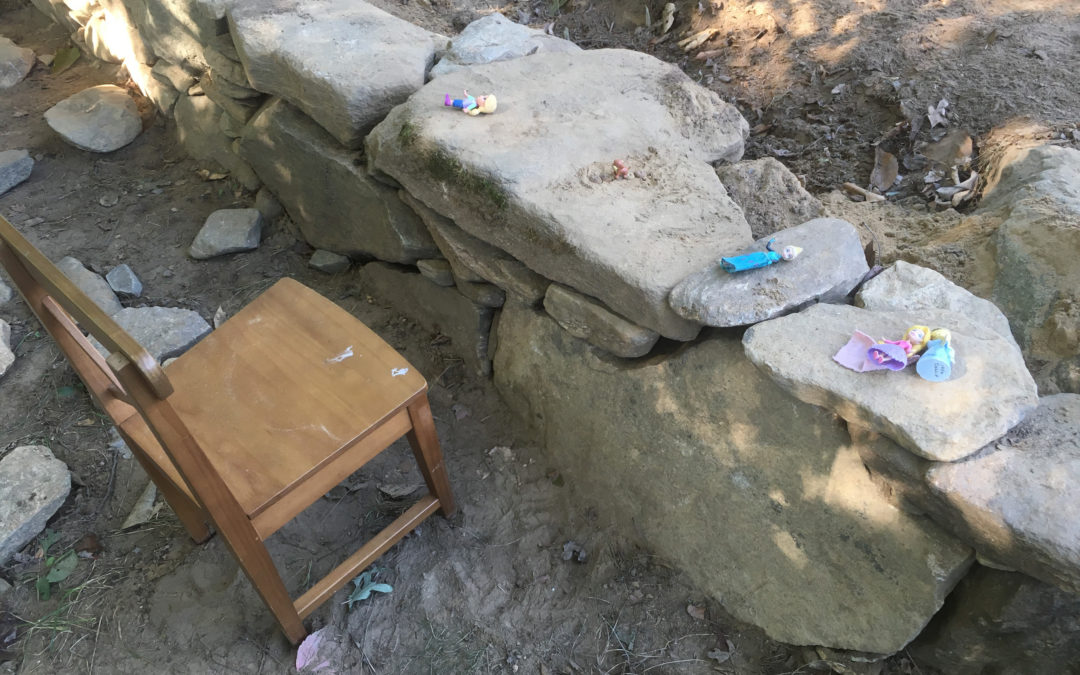

Espaliered Native Plants: The Formal Garden

Two-year old red chokeberry being trained as espalier.

Espalier Shapes

Espaliered Apple Tree, Portland, OR

UBC Botanincal Garden Vancouver, BC

Chicago Botanic Garden
Vegetable Planting Calendar
 We’ve had a few days of such lovely warmth that we might forget it’s still winter. There is plenty of planning to do before vegetable gardens can be planted, so here is a Planting Calendar to help you organize for plan what can be planted first.
We’ve had a few days of such lovely warmth that we might forget it’s still winter. There is plenty of planning to do before vegetable gardens can be planted, so here is a Planting Calendar to help you organize for plan what can be planted first.
Get those seeds out and find a warm, sunny spot for germination (or grow lights if you have them) and start dreaming of your summer harvests and next winter’s treats!

Stones & Castles

Mosaic Detail in Granite Patio
Sometimes, a work space turns into someone else’s play space. This wall is the foundation for a sugar shack, but on this particular summer afternoon, it was the princesses’ castle wall. Planning for family activities is an important part of landscape design. Sometimes people focus solely on creating specific play areas for the kids, but often, just having an interesting space is what kids need.
Paths can twist and turn, as an invitation to see what is around the corner or the future site of a surprise attack. Elevation changes offer children a chance to experience viewing the world from a different perspective. Water features are possibly a place to splash, feel the coolness, see reflections, and watch insect, amphibians, and fish throughout their life cycles. Stones of different sizes, colors, and textures can inspire thoughtful inquiry or construction.
Diverse plant choices provide a variety of heights, textures, colors, smells, and tastes. Different plant heights allow kids to feel both big and small. Big plants provide hiding places where kids can see, but not be seen. Rhododendrons and lilacs become forts on the inside, fallen tree trunks become bridges or lookouts, vines create tents. Groundcovers are a carpet from which to watch the leaves flutter or clouds race across the sky. Small plants could become troll and fairy houses, or just the place where chipmunks disappear and reappear.

Swamp milkweed with crab spider
A variety of colors can help encourage exploration and discovery. Have you even taken the time to notice what color of plants attract what type of pollinators? Blooms, fruits, and leaf colors herald the change of seasons. Different textures of plants allow kids to experience plants by sight and touch. Small, large, broad and strappy leaves can be as inspiring as the soft, velvety feel of Canadian ginger and lamb’s ear. The leathery leaves of mayapples and their flowers that can only be viewed by peeking under the umbrella-like leaves (and finding out the fruits are food for Eastern box turtles). There’s the prickly and sharp, dried purple coneflower seedhead or the smooth, silky-soft feeling of northern sea oats or the leaves of threadleaf bluestar. The rough leaves of peppermint and sage, the smooth, brittle crush of skunk cabbage, and sweet woodland phlox provide exploration through scent.

Lowbush blueberry blooms
Edible plants like blueberries, wild strawberries, thimbleberries, and beach plums, elicit sweet memories of summer; the tartnesss of cranberries, the sweet vanilla-banana flavor of paw paw and savory flavors of herbs can surprise. Children can learn how fruits, seeds, and herbs are grown and how they can be added to meals for nutrition and increased flavor. There are also teachable moments about how all plant fruits are not edible, and children can learn to appreciate the knowledge that these fruits provide food for other creatures, even if not for humans.
There are so many different ways that landscapes and plant choices provide playful, sensory, and educational opportunities for children. Unstructered play and exploration of nature through observation, touch, smell and taste, including the nature in our landscaped yards, balconies, and porches, is a great way for children to experience the world.

Gray treefrog






